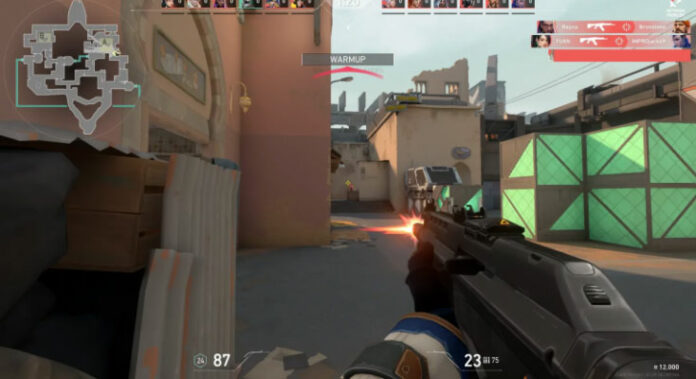With the UniPin Valorant tournament reaching its peak, we’ve got an in-depth guide to the crucial terminology and concepts every player and viewer should be well-acquainted with.
Valorant, like any other team-based shooter, harbors its secrets and terms that might leave even experienced gamers scratching their heads. Have you ever wondered what an entry fragger does? Why is trading favorable for some teams but not for others? And what exactly is the economy, and why can’t you ever afford an OP? Well, let’s unravel these mysteries together.
Valorant Terms You Should Familiarize Yourself With
Understanding what’s happening in a game of Valorant requires a bit of groundwork. While those familiar with typical shooter games might grasp the basics, this is a different run-of-the-mill gaming experience. The guide below aims to clarify why your teammates might be criticizing you in the chat for “not shift-walking.” So, without further ado, let’s dive right in.
Ability Trading
It is a tactical move for attackers and a defensive strategy for defenders. Characters with Area of Effect (AOE) abilities like smoke, flashes, and damage-dealing skills can delay an enemy push or disrupt defenders from advantageous positions. These are reactive plays designed to counter the advantages provided by the enemy’s abilities.
Ace
When a single player secures all five kills in a round, they achieve an ace. Teammates often back off to allow them to accomplish this feat rather than stealing their kills. A “Team Ace” happens when all players on a team secure a kill during the same round. This highlights the power of teamwork.
Aggro
An aggressive player who deliberately reveals their position to draw the enemy’s attention. This can create openings for flankers or influence the outcome of a prolonged firefight. When a player plays aggressively, they usually become the primary focus of the enemy.
Counterstrafing
In Valorant, the first shot from your weapon is the most accurate, provided you’re not sprinting around while firing indiscriminately. Counterstrafing involves instantly changing your movement direction by pressing the ‘A’ or ‘D’ key before firing your weapon while stationary. This results in more consistent aiming.
Cubby
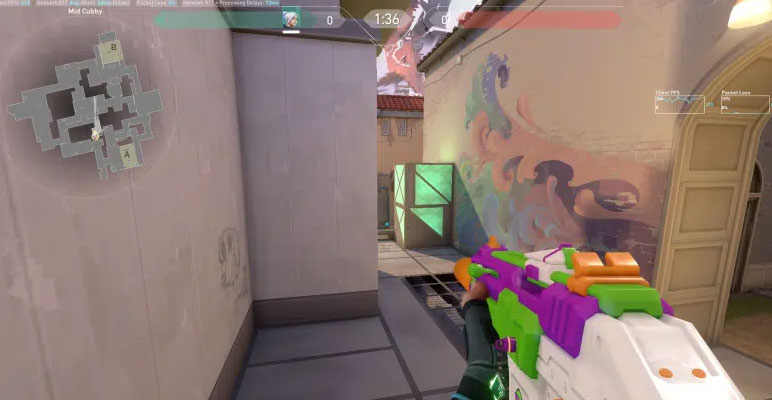
A recess or tiny nook in a wall where players can lie in wait for an enemy to pass by. Most sites and maps feature multiple cubbies.
Dink
A term used for a headshot. It’s usually a one-shot kill, although shields and different gun damages can affect the outcome.
Double Set Up/Double Up
When two players, typically defenders, position themselves in the same spot to overwhelm any enemy peeking. Usually, this setup includes a quick exit option, allowing one player to rotate quickly if necessary while still leaving one player behind to hold the mid-ground. When a team places four or more players on one side, it’s called “stacking the site.”
Double Swing
This maneuver involves two players aggressively swinging from cover to secure a kill or force a trade. It’s commonly seen in offensive scenarios, such as first-peek strategies, or in defensive situations when the team is at a numerical disadvantage and aims to win a quick skirmish.
Economy (Econ)
Your in-game money (credits) and how you manage it. Kills, bomb plants, assists, and round wins all impact your available funds. Good economic management is essential, as it can determine your access to high-tier weapons.
Entry Fragger
Typically, a duelist character (e.g., Reyna, Jett, Phoenix) who leads the team into combat is the first to engage. Entry fraggers may not always have the best stats and often rack up the most deaths. Nevertheless, their role is to create opportunities for their team by securing one or two kills before getting traded.
Fake Defuse/Ninja Defuse
They initiate a bomb defusal while enemies are still alive, luring them out of their hiding spots and forcing them into the open. This is usually done long enough to trigger the audio cue, after which the player turns aggressive, attempting to thwart the defusal. When defenders defuse before the opposing team realizes what’s happening, it’s known as a “Ninja defuse.”
Feeding
They need to play more aggressively or rush to a point with proper checks or discipline. You can typically spot a feeder if they’re the first to die, consistently dying every round or engaging in fights they have no hope of winning.
Flick

While good aim often involves precise crosshair placement, flick shots are necessary when an opponent unexpectedly appears in an unexpected location. They are challenging but look incredibly satisfying when executed.
Force a Rotate
By applying numerical pressure to one bomb site, you compel the enemy team to react to your actions, thereby diverting attention from other sites. This tactic is often used as a feint or early in a round when a smaller team plants on a soon-to-be-vacated site.
Frag/Pick
Depending on the commentator’s preference, a kill is interchangeably referred to as a frag or a pick.
Full Buy
They are typically achieved when players have over 4500 credits in their wallets. A total buy allows you to purchase a high-tier rifle, full shields, and all abilities. The OP and assault rifles are costly, with prices of 5000 and 2900 credits, making them a risky investment if lost to the enemy. Total buys usually occur after the first three rounds when teams have upgraded from pistols to mid-priced weapons.
Heaven/Hell
Terms used to distinguish high and low ground on maps where verticality plays a significant role. This terms Valorant comes into play on maps with sniper nests or positions that can be approached from both high and low angles.
Defensive teams often divide their resources between watching heaven and guarding entry points. On the other hand, attackers may aim to secure heaven early to eliminate the enemy’s high-ground advantage and take it for themselves.
Hookah
A location near the B site on the Bind map is often called the short side position. It’s a small room opposite the teleporter exit, providing a vantage point for high-ground attacks on the B site.
Molly
A throwable ability that creates an area of effect (AOE) damage, similar to a Molotov cocktail. Examples of molly Abilities include Killjoy’s nanoswarm and Brimstone’s incendiary. Phoenix’s throwable fire ability could also be categorized as a molly. The term “molly” is derived from Molotov, as it shares the same afterburn and area-clearing effect.
Money in the Bank
It refers to a team that has won several rounds and has not spent much on resupplying. Players can accumulate up to 9000 credits, and wealthier teammates often buy weapons for those who have died in previous rounds. Building up money involves buying low-cost weapons, light shields, and minimal abilities. Sometimes, sacrificing a round to equip your team better later is necessary.
OP
The Operator, commonly known as the OP, is the most expensive weapon in Valorant—a powerful sniper rifle capable of one-shotting most opponents, even those with full shields. It is a formidable weapon that can single-handedly lock down long lines of sight.
Orb Pick-up
Ultimate orbs are scattered throughout the maps, with two near each team’s spawn and others near entry points to bomb sites. Collecting a top orb boosts your maximum meter by one segment but comes with a sound cue and the risk of being an easy target for a few seconds. Teams often assign specific players to collect orbs to build up high-value Ultimate Abilities.
Peek/Jiggle Peek
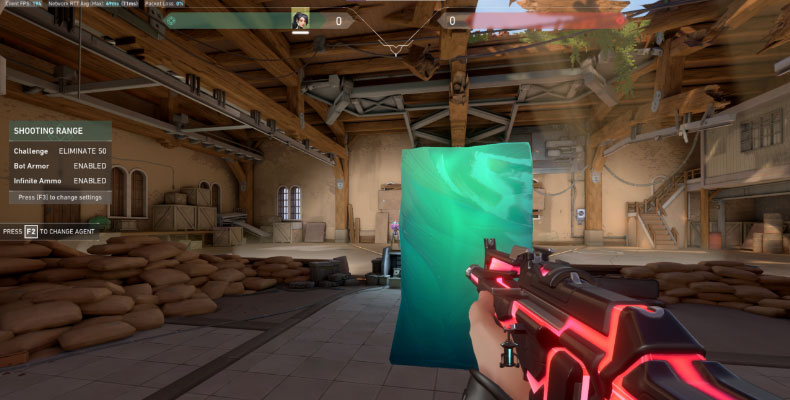
To quickly turn a corner and attempt to spot enemy positions, to bait out enemy shots while minimizing the risk to yourself. Jiggle peeking is a faster and more fragmented version of this tactic. The goal is to make yourself as small a target as possible while baiting out enemy shots, often used when facing opponents wielding sniper rifles.
Pistol Round
The initial and sometimes the second round of a match, during which both teams can afford sidearms and possibly a few abilities. Strategies in pistol rounds are vastly different from those in later rounds.
Playing Off-Angle
They are positioning themselves in an unconventional or unexpected spot to catch the enemy off-guard. Typically, opponents won’t expect someone to be in that corner or angle. Characters like Jett, with her mobility, can access high-ground positions that can be considered off-angle.
Playing Slow
Valorant rounds can be lengthy, and best-of-25 matches can lead to a wide range of strategic approaches. Sometimes, a team will wait for the defense to grow impatient or push recklessly. Other times, they’ll seek information or bide their time in the backline, intending to apply late pressure on the enemy team. Playing slowly can force opponents to use their abilities and reveal their positions.
(Insert A, B, or C) Points Long and Short
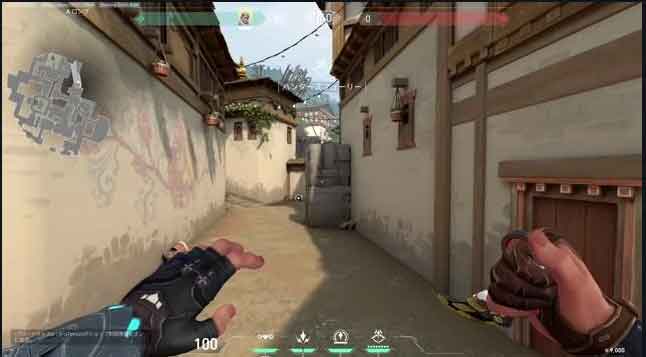
Each bomb site has two entries, “long” and “short,” depending on the map and bomb site layout. Long entries typically offer longer lines of sight and favor defensive positions. You’ll commonly hear terms like A Long, B Long, and C Long. In contrast, “short” refers to the inside path to the point, often located close to the short path that runs parallel to the opposite side.
Post Plant
The phase that follows after the bomb has been planted. During this phase, attackers defend the site, while defenders take the initiative to retake the site and defuse the bomb. If there has been limited action in a round, the post-plant phase usually comes into play.
In seemingly unwinnable situations, such as being down 1 to 5 or 1 to 3, defenders might opt for exit frags during the post-plant phase. They wait near a bomb site for the enemy to escape the explosion, often securing a quick kill to damage the enemy’s economy.
Prefire
A tactic often used in first-person shooters, especially in Valorant, where time-to-kill is low. Prefiring involves shooting through a wall or obstacle where you believe an opponent is positioned, hoping to catch them as they peek. This tactic is employed to gain an advantage in 50/50 situations.
Rez
Sage, one of the agents in Valorant, possesses the ultimate ability called “Resurrection,” commonly shortened to “Rez.”
Shift-Walking
What does shift-walking mean? You’re not alone, as many teammates in Unrated mode may not fully comprehend it. But don’t let that tilt you. “Shift-walking” refers to creeping while holding (or toggling) the Shift key, ensuring your footsteps remain silent and your position remains concealed. This is the reason why many rounds start slowly. Unless a team is discovered or executing an aggressive play, they are likely shift-walking.
Shift-walking is crucial because it prevents your footsteps from making noise, which could give away valuable information to the opposing team, such as your location, movement direction, and the bomb site you’re attacking. Players should only run when it’s not practical to shift-walk, such as when going for an aggressive or fast push or during a firefight when your position is already known.
Smoke Out
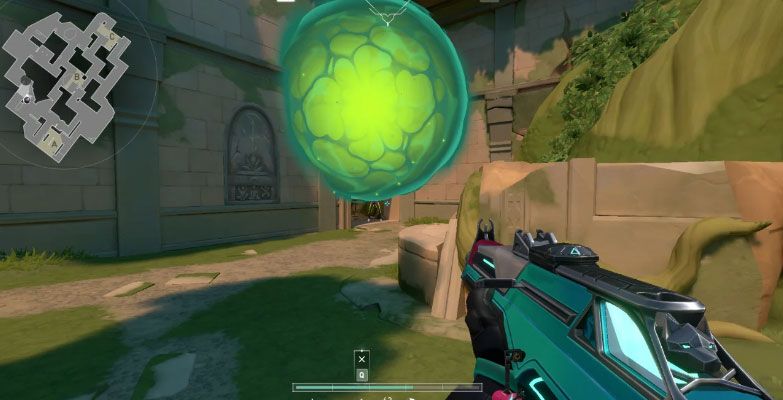
When agents like Omen, Brimstone, Jett, or Cypher deploy their utility smokes on the map, it creates a visually obscured area. Using smoke typically forces the opposing team to play conservatively or retreat. Smoking out a site allows attackers to make a safer push.
Spending Strategy
Distinct from ultimate and weapon economy, spending strategy refers to how players allocate their resources for a specific purpose. Occasionally, you may notice a Jett entering a round with a heavy shield and a Ghost pistol, even though they have enough credits to purchase an Operator.
In this case, the Jett will likely use the Bladestorm ability instead. Different economies can impact the overall strategy and equipment choices, such as a top-fragging player who spends all their money on abilities. At the same time, a teammate purchases a powerful weapon and forgoes abilities.
Thrifty
Winning a round by securing a kill with an enemy player’s weapon.
Trade
A trade occurs when one player from each team is eliminated within the duration of a gunfight. This typically happens when the second teammate takes down the second enemy to engage, diverting attention from the entry fragger. Your ultimate ability, or “ult,” is your character’s most powerful skill.
Ultimate/Ult
Your ultimate ability, or “ult,” is the most potent in your character’s arsenal. It’s unlocked through kills or orb pick-ups rather than purchased with credits. Skilled players can generate their ultimates more rapidly than those performing poorly.
Each character’s ultimate ability is unique and can significantly impact the game by flat-out eliminating enemies, revealing information, or enabling secure pushes into dangerous areas with the potential for follow-up kills.
Wallbang
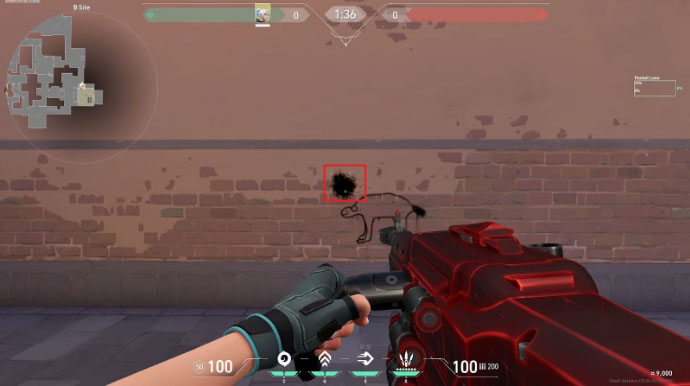
To shoot through a wall or other forms of cover to damage enemies hiding behind it. In Valorant, opponents are always waiting around the next corner. Hence, it’s often worth attempting wall bangs, especially with weapons that can penetrate cover effectively. Clever wall bangs can lead to surprise kills on bomb campers.
You need to be well-versed in these crucial terms to excel in Valorant. If you want to take your game to the next level, consider Top Up Valorant only on UniPin as an option to enhance your experience further. Happy gaming!

